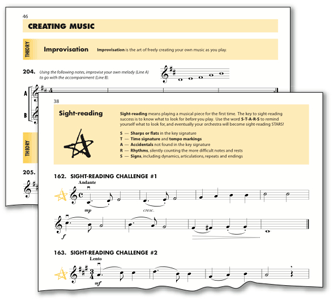
If learning to play piano with music theory alone is playing by ear “on steroids,” then playing by ear is … well, um … playing by ear without steroids.

FINGERING CHART ALL FOR STRINGS THEORY BOOK 1 TEACHERS HOW TO
In summary, you should view this method as playing by ear “on steroids.” You will learn to produce musical sounds and songs, knowing what you are playing on the keyboard and why you are playing it that way.īut you will not learn how to sit, how to position your arms and hands, how to press the keys, how to pull off difficult progressions, and how to express yourself as maturely as possible. You will learn to think carefully about the music that you play. You can also opt to purchase a book devoted to explaining piano theory in a thorough and straightforward way, such as The Complete Book of Chords, Arpeggios and Cadences by Willard Palmer.īesides affordability, this approach equips you to play the piano in an intelligent manner. To benefit from this approach, you will need some innate musicality and a heightened personal aptitude for applying and analyzing information in a practical, musical way without outside assistance.Īs challenging as this method may seem, it offers some valuable benefits.įor nominal $’s, you can purchase the theory books alone from the established curriculums I’ve previously mentioned, while not purchasing the methods and technique books, too. In summary, this is an academic and mental approach to learning the piano that focuses on the written side of music. Music theory encompasses elements of key signatures, time signatures, notation, chord structures, rhythmic patterns, important symbols, and descriptive words, phrases, and abbreviations. If you struggle to understand a lesson, you don’t have to wait an entire week for your next lesson, because you can replay the lesson on your computer or phone whenever you like, putting you in control of your learning experience.ĭespite these advantages, technological innovations carry potential disadvantages as well.

“Play the keys as they light up on the screen!” These developments carry terrific advantages, providing you with interactive, graphical interfaces that can accelerate your understanding and may be especially captivating for children. Online courses, interactive apps, and live lessons through web chat and video tools bring lessons to your home, making learning the piano more accessible and convenient than ever before. Thanks to the internet, you can avoid the time, expense and hassle of traveling to a studio. Three decades later, you no longer use the Yellow Pages and your options for learning have multiplied. We also bought an old spinet piano with quite a few quirks. Once we chose a teacher, we scheduled 30-minute lessons and drove to (and from) her private studio weekly. My mother searched for teachers in the Yellow Pages (remember those?) and asked for recommendations from friends.

The pitch would be the same.Īll variations of notes and fingerings in higher positions are not labeled and shown (the entire length of the fingerboard can be used to finger and play notes).At eight years old in the 90’s, I wanted to learn piano. This note could be fingered using either a high 3rd finger, or a low 4th finger. For example, in first position on the A string, D# and Eb have the same sound (and are enharmonic notes).

This indicates those two notes are enharmonic, meaning, even though they are named or "spelled" differently, they sound the same pitch. The fingerboard chart shows many instances of two musical letters being placed on the same space. For an explanation of shifting, visit Shifting & Positions. These notes require the violinist to "shift" the position of their hand to a higher position on the keyboard in order to play these notes. Most violin music for beginners uses 1st position.įingering for notes played in 3rd position are to the left of the fingerboard. Violin Fingering for notes played in the 1st position are to the right of the fingerboard.


 0 kommentar(er)
0 kommentar(er)
